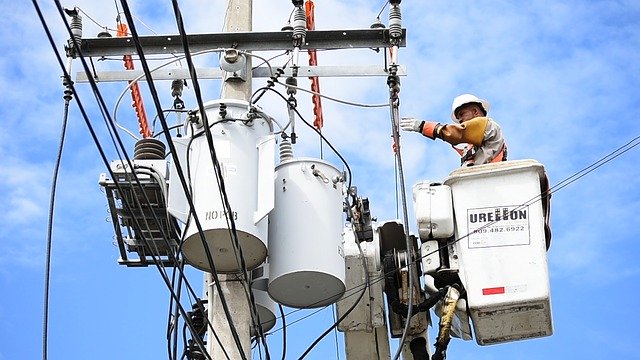Alternating current is an electric current that periodically switches its direction, in contrast to direct current which just streams in a solitary direction that cannot change sporadically.
How Alternating Currents Is Produced
Numerous sources of electricity, most prominently electromechanical generators, produce AC current with voltages that other in extremity, switching among positive and negative after some time. An alternator can likewise be utilized to intentionally create AC current.
In an alternator, a circle of wire is spun quickly within a magnetic field. This produces an electric current along the wire. As the wire turns and periodically enters an alternate magnetic extremity, the voltage and current substitute on the wire. This current can change direction periodically, and the voltage in an AC circuit likewise periodically turns around because of the current changes direction.
AC comes in a few structures, as long as the voltage and current are alternating. On the off chance that an AC circuit is snared to an oscilloscope and its voltage is plotted after some time, you are probably going to see a few unique waveforms such as sine, square, and triangle – sine is the most common waveform and the AC in many mains-wired structures have an oscillating voltage in the sine wave structure.

Alternating Currents Applications
AC is most commonly found in mains-wired structures such as homes and offices. This is because producing and shipping an AC current across significant distances is generally simple. At high voltages of over 110kV, less vitality is lost in power transmission. At higher voltages, lower currents are produced, and lower currents create less warmth in the power line because of a lower level of resistance. This, therefore, implies less vitality lost as warmth. AC currents can be converted to and from high voltages effortlessly by utilizing transformers.
AC is likewise extraordinary for use in electric engines because engines and generators are a similar device. The main difference between a generator and an engine is that an engine converts electrical vitality into mechanical vitality. These engines are utilized in a wide range of appliances like coolers, clothes washers, and dishwashers.
This Is Where AC Becomes Extremely Helpful
The principal utilization of a transformer is venturing voltage up or down from the powered coil to the unpowered coil. This gives AC a preferred position well above DC in the domain of power circulation because, as referenced above, communicating electrical power over significant distances is much more efficient with higher, ventured up voltages and littler, ventured down currents. Before reaching power outlets, voltage is ventured back down and current is ventured back up.
This sort of transformer technology has made long-extended electric power appropriation efficient and practical. Without transformers, it would be awfully costly to construct power frameworks in their current significant distance structure. Also, because shared inductance depends on changing magnetic fields, transformers just work with AC.
Cables For Alternating Current
In AC power current likes to go close to the surface of a wire. AC power in a wire additionally causes a magnetic field to conform to it. This field affects other nearby wires causing nearness effects. These properties must be managed when structuring an AC circuit. The majority of the circuits at our homes are connected through an AC circuit and for the exact wiring of your home you have to know the exact size of cable necessity for your home. You can Read More about how to choose the correct wire size for your home from the link.
